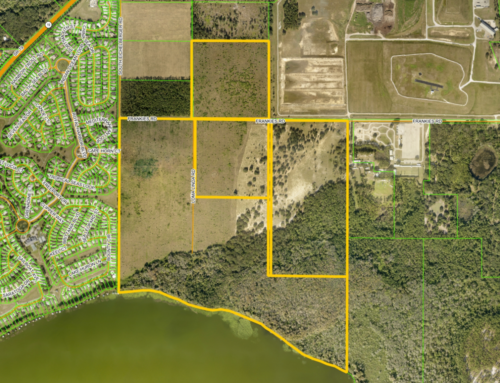October 9, 2024
‘Largest National Guard Deployment in the History of Florida’ – Gov. DeSantis Gives New Update on Hurricane Milton

By Cindy Peterson
‘Largest National Guard Deployment in the History of Florida’ – Gov. DeSantis Gives New Update on Hurricane Milton

In a detailed briefing from the Florida Emergency Operations Center, Governor Ron DeSantis provided an update on the state’s preparation for Hurricane Milton, a powerful storm expected to impact the state soon. Governor DeSantis described the extensive efforts undertaken to ensure that Florida is ready to face the hurricane and outlined the state’s coordination with federal agencies, neighboring states, and local authorities.
Key Points and Statistics:
- Hurricane Milton’s Strength:
- Currently a Category 4 hurricane with maximum sustained winds of 155 mph, Hurricane Milton is just “a whisker away” of Category 5 status. DeSantis warned that the storm is expected to cause “major, major damage” and, while there is hope that the storm will weaken before landfall, the state is preparing for a direct hit. The storm is expected to make landfall either late tonight or early tomorrow morning.
- “This hurricane is going to pack a major, major punch and do an awful lot of damage,” the governor stated.
- Largest National Guard Deployment in Florida’s History:
- Governor DeSantis emphasized that the largest National Guard deployment in Florida’s history has been activated to support storm response efforts.
- 6,000 Florida National Guardsmen have been deployed, with an additional 3,000 National Guardsmen from other states assisting. This marks the largest mobilization of military support the state has ever seen.
- In addition to personnel, 500 tactical vehicles, including 180 high-water vehicles, have been deployed, along with aerial and ground support teams.
- Search and Rescue Operations:
- 26 search and rescue teams are pre-positioned in potential impact zones along the west coast of Florida to respond as soon as the storm passes. An additional 34 search and rescue teams have arrived from other states.
- These teams include 500 high-water vehicles and are supported by 10 maritime crews, four drone teams, and two UH-60 Black Hawk helicopters. Their mission is to begin rescue operations immediately once the storm clears.
- Fuel and Resource Distribution:
- Florida is well-prepared with fuel supplies. Governor DeSantis mentioned that the state has 1.6 million gallons of diesel and 1.1 million gallons of gasoline staged and ready for distribution following the storm. He assured the public that there is no fuel shortage, but acknowledged high demand has caused some gas stations to run out temporarily.
- The Florida Highway Patrol has escorted 106 fuel tankers through traffic, delivering almost 1 million gallons of gasoline from ports in Tampa, Jacksonville, Everglades, and Manatee.
- To prevent fuel shortages, additional fuel contingencies are in place, particularly at Port Manatee and Port Tampa Bay, where operations could be impacted by the storm.
- Shelters and Evacuation:
- The state has opened 149 general shelters across Florida, with the capacity to accommodate up to 200,000 individuals. At present, 31,000 people are utilizing these shelters.
- 36 county-owned special needs shelters are also operational, serving residents with medical or accessibility needs. To support these efforts, the state has opened an additional 6 state-operated supplemental shelters to provide further capacity if needed.
- For those who need to evacuate, Governor DeSantis encouraged residents to use these shelters as a safe option. “There is space available in these shelters,” he assured, emphasizing the importance of evacuating early, especially for those living in vulnerable structures like mobile homes or older houses built before modern building codes.
- Healthcare and Utility Support:
- Florida has evacuated 352 healthcare facilities, including 16 hospitals that were in the projected path of the storm. Special preparations have been made for veteran nursing homes, which are hurricane-proof and located outside flood zones.
- In an unprecedented effort to restore power after the storm, 50,000 linemen—the largest deployment of utility workers in U.S. history—have been mobilized. Workers have been brought in from as far away as California, and power restoration efforts will begin immediately once the storm passes.
- Ongoing Debris Removal and Infrastructure Protection:
- Recognizing the impact of Hurricane Helene, which recently struck the state, Governor DeSantis highlighted efforts to remove debris in hard-hit areas like Manatee, Sarasota, and Pinellas counties. Over the past weekend, the state cleared 55,000 cubic yards of debris, reducing the debris hazard on these barrier islands by approximately 50%. The Florida Department of Transportation (FDOT) was instrumental in this 24/7 operation, which utilized 1,500 pieces of heavy equipment and over 300 “cut and toss” personnel.
- The state has also deployed 11,000 feet of flood protection systems around critical infrastructure, including hospitals, wastewater treatment plants, and electric grids. Additionally, 600 ambulances have been dispatched to assist in evacuation and response efforts.
- Public Safety and Law Enforcement:
- Governor DeSantis warned against opportunistic crime following the storm, noting that 500 out-of-state law enforcement officers have been deployed to support Florida’s efforts to maintain law and order.
- “My message to you is don’t even think about it. We are going to come down hard on you,” he warned those who may attempt to exploit the situation post-storm.
- Partnering States and National Response:
- The governor thanked the 20 states that have provided support to Florida ahead of the storm, stating, “This is just what we as Americans do.” He also acknowledged the continuous cooperation with the President and FEMA to marshal all available resources for the state’s preparation and response efforts.
- Support for Floridians in Need:
- The Florida Disaster Fund, which was reactivated after Hurricane Helene, continues to accept donations for both Helene and Hurricane Milton recovery efforts. Donations can be made by texting “DISASTER” to 20222 or by visiting the Florida Disaster Fund website.
In closing, Governor DeSantis reiterated that the “roads are still flowing”, and there is “still time to evacuate” for those in vulnerable areas. He encouraged Floridians to take advantage of the available shelters and ensure their safety before conditions worsen. He also expressed deep gratitude to the first responders, state workers, and volunteers who have been working tirelessly to prepare for the storm, praising their dedication and resilience in the face of back-to-back hurricanes.
Conclusion:
Governor DeSantis provided a comprehensive overview of the state’s preparations for Hurricane Milton, with key measures including record-breaking National Guard deployment, substantial fuel and resource reserves, robust search and rescue operations, and ample shelter space. His message was clear: Florida is ready, and residents are urged to act now to protect themselves and their families.
Originally from the small town of Berryville, Arkansas, Cindy has become a multimedia specialist in journalism, photography, videography, and video editing. She has a B.S. in Communications from the University of Central Arkansas and produces Style Magazine's Sports Hub Podcast and the Healthy Living Podcast. She also produces for Beacon College’s Telly Award-winning PBS show, “A World of Difference.” When she isn’t working, Cindy loves traveling the National Parks with her husband , Ryan, and son, David, photographing wildlife.







